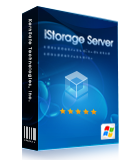

iStorage Server is an IP Storage solution, you can use it to export your storage device to locally attached storage device in client machines. When you want to use CHAP authorization, please first create a CHAP user (secret is 123456781234) and group, otherwise, bypass the user and group creation. Here we created a user named test that belongs to a new created group named Administrators.
Simply, for using iStorage Server, press the
Create button in the main interface of iStorage Server Management console,
will start the Select Device Type wizard, see figure 1, you can select the
following device types to share your storage device:
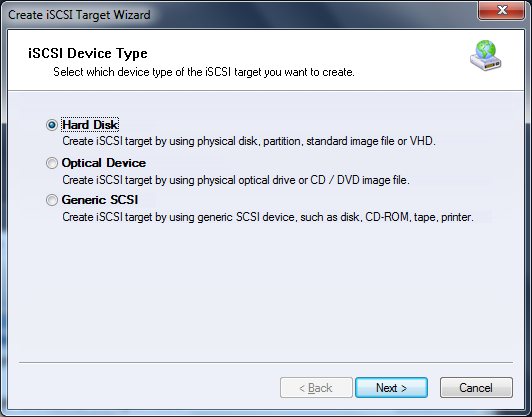
1. Hard Disk
In this type, you can create iSCSI target by using physical disk, partition,
standard image file or Virtual Hard Disk (VHD). There are five types as show in figure 2:
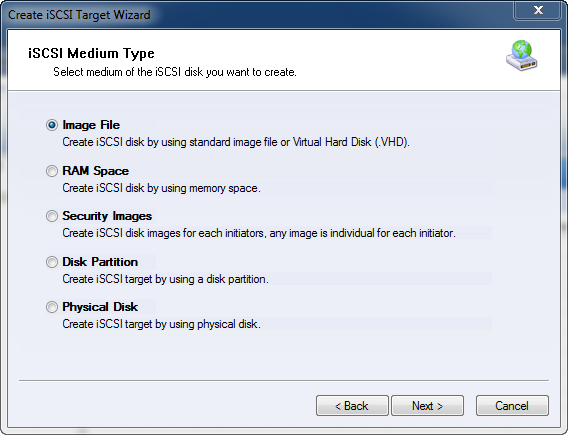
Image File
In this type, you can create a blank file or use an existing file, to store
disk/volume data, so we called it "image file", it also has two types: standard
image file and Virtual Hard Disk image file.
RAM Space
In this type, you can create a virtual disk and store disk/volume data into the
memory, which has high transfer speed but all the data will be lost after computer
is shutdown.
Security Images
In this type, just like Image File device, but all images are individual(each client different),
additionally, the images can be encrypted with CHAP user's secret. So you can
use this type to central store safe images for your clients or employees.
Disk Partition
In this type, different from the above, you will use your existing storage
device's partition, C:, D:, and so on.
Physical Disk
In this type, you can use your existing disk storage device such as
ATA/IDE/SCSI disks.
2. Optical Device
In this type, you can create iSCSI target by using physical optical drive,
Virtual Optical Drive or even create a virtual CD/DVD burner. There are three types as show in figure 3:
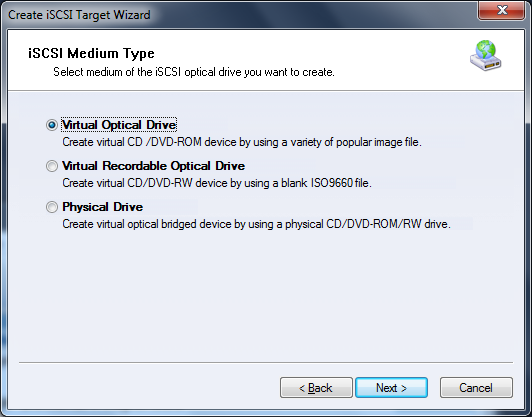
Virtual Optical Drive
In this type, The device mapping to clients is the optical media (CD/DVD), the
image files can be *.iso, *.bin, *.mds, *.nrg, *.cdi and so on. So you can use it for centralized management and publish or share your CD/DVD images to your clients.
Virtual Recordable Optical Drive
In this type, you will be able to create virtual CD/DVD-RW burner that
will be able to burn to ISO files that will stored on remote server.
Physical Drive
In this type, you can use your existing optical storage device such as
ATA/IDE/SCSI CD/DVD/RW-ROMs.
3. Generic SCSI
In this type, you may map generic SCSI devices to your initiator, such as USB
Storage, Tape and Optical Scanner (figure 4).
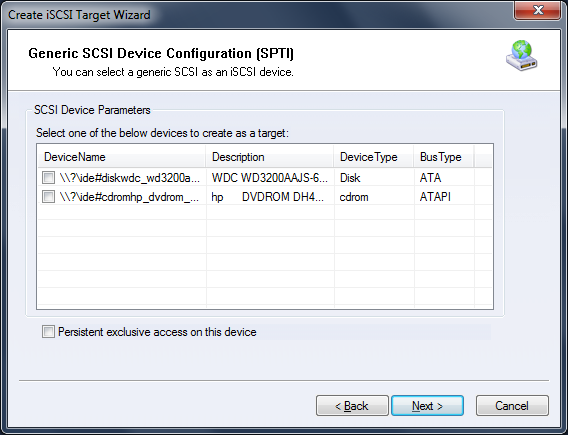
At the client, take the Microsoft initiator as an example, just do the
following steps to connect iSCSI target provided by iStorage Server.
Start Microsoft iSCSI initiator, On the Discovery tab, click the Discover
portal... button
under the Target Portals box. This will open the Discover Target Portal dialog box,
shown in Figure 5.
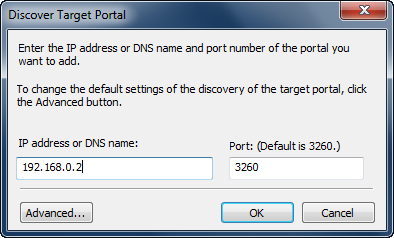
In the Add Target Portal dialog box, provide the name or IP
address of your computer that is running iStorage Server. The default communication
port for iSCSI traffic is 3260. Unless you have changed server's port, leave this as
is. Even though you're connected to the array itself, you still need to tell the
initiator exactly which target or volume you want to mount on your local
machine. To see the list of available targets on the array you selected, choose
the Targets tab, shown in Figure 6.
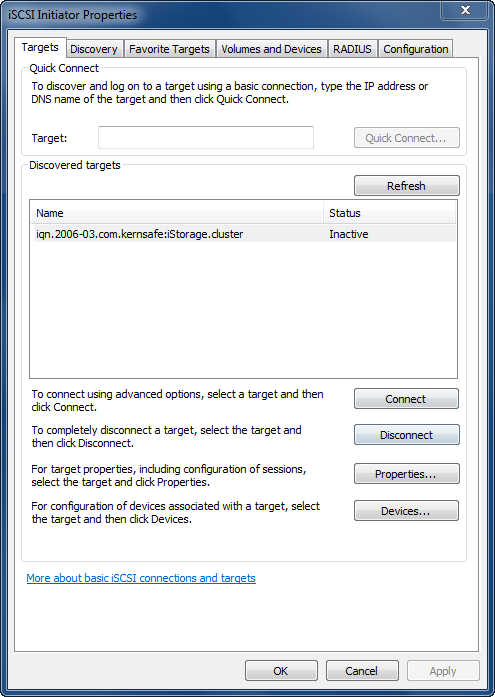
To connect to an available target, choose the target and click
the Log On button. A window pops up (Figure 7) with the target name and two
options from which you can choose.
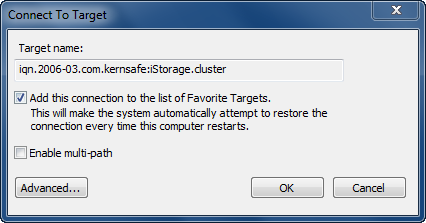
Click on the Advanced button and make necessary configuration
changes. The Advanced Settings dialog box is shown in Figure 8. And then input
your CHAP user name(test) and secret(123456781234) if the target using the CHAP
authorization.
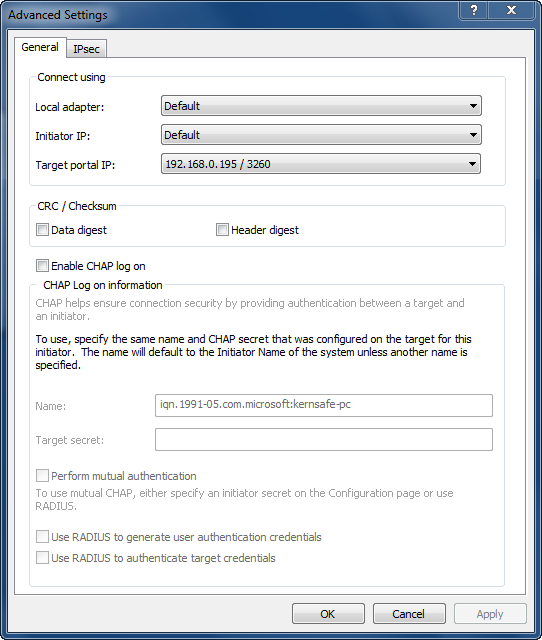
When you mount a brand new iSCSI-based volume on your server,
Windows treats it the same as if you had added a new hard drive to your
computer. Take a look at this: Open Computer Management (Click one the Start
button, right-click My
Computer and then select Manage). Choose the Disk Management option. If the volume you are
using is still blank -- that is, newly created on your iSCSI target and does not
contain data -- Windows will pop up the Disk Initialization wizard, as shown in
Figure 9.
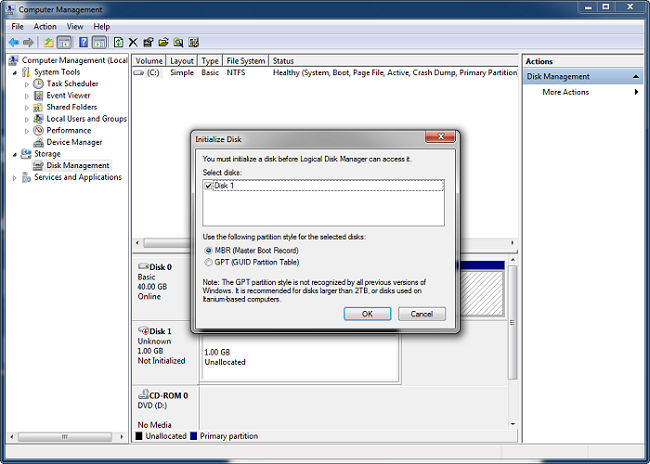
Just as a physical hard disk, you need to initialize the new drive, create a partition, and format the new volume.
Enjoy!
SUPPORT
- Forum
- Support Ticket
- [email protected]

- Voice Mail:
- +1 (518) 289-4888






